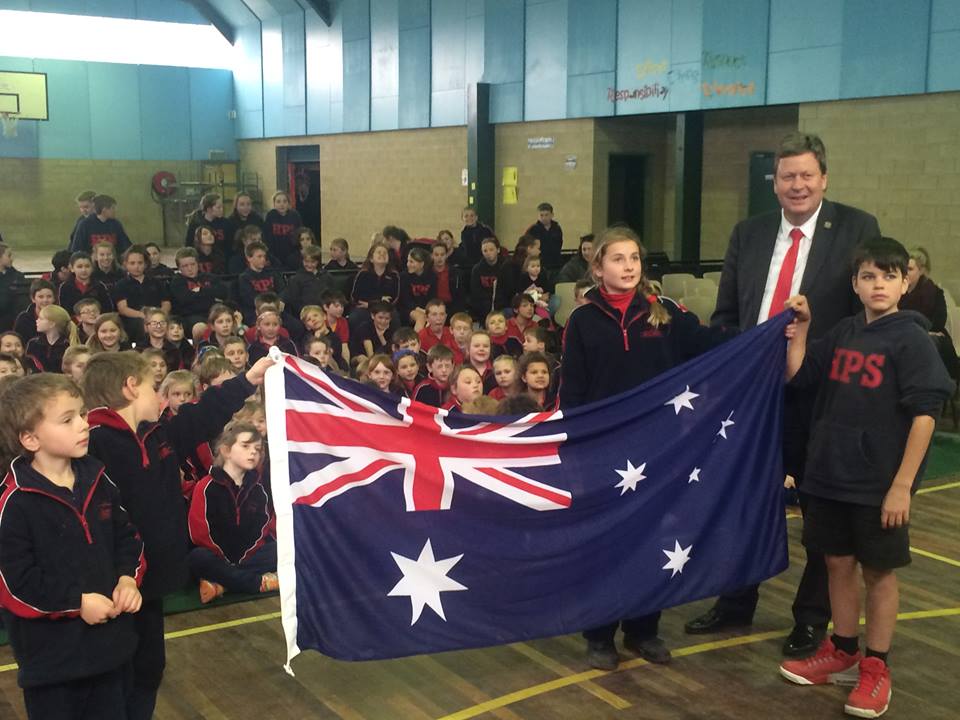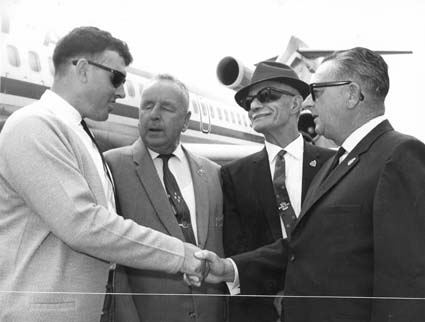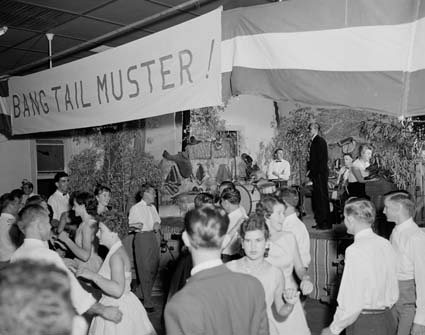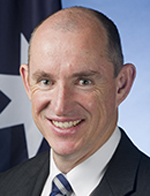‘Will the new Anzac centenary minister be too busy to bother?’ Honest History, 1 December 2015 updated
[Note: earlier, edited versions of this article appear in the Public Servant Informant supplement of the Canberra Times for 1 December 2015, pages 8-9, under the title ‘Beginning of the end of the Department of Veterans’ Affairs?’ and online as ‘The end of veterans’ affairs: will Anzac Centenary Minister Stuart Robert be too busy to bother?’ The table in the hard copy Canberra Times version has an error; the version below is correct and is as sent to the paper.]
Update 19 December 2017: Minister Dan Tehan moved on after almost two years in the job – including presiding over some necessary spending on systems – and Minister Michael McCormack took over.
Update 12 February 2016: Minister Robert lost his job, but not because it was too much for him.
Update 4 December 2015: the Minister has responded on Twitter.
___________________________________
When the author worked in the machinery of government area of the old Commonwealth Public Service Board one of the unwritten rules was that no combination of functions or tasks was impossible, provided the minister concerned was up to the job. Some ministers were expected to – and did – wilt under a light load of responsibilities while others thrived regardless of what their prime minister threw at them.
These hoary issues arise again in the wake of the recent ministerial reshuffle: while Senator Michael Ronaldson, the previous Minister for Veterans’ Affairs and Minister Assisting the Prime Minister for the Centenary of Anzac, also had the job of Special Minister of State – mostly a doddle – the new holder of the Veterans’ Affairs and Anzac jobs, Stuart Robert MP, is also to be Minister for Human Services, which makes his job altogether different. Let’s look at this historically …
 Then Minister Ronaldson, August 2015, with students of Haddon Primary School who ‘skipped, walked or ran 14,765kms … – the distance from Melbourne to Gallipoli – as part of their program to educate students about the Centenary of Sacrifice’. They won an award. (Facebook/Senator Ronaldson)
Then Minister Ronaldson, August 2015, with students of Haddon Primary School who ‘skipped, walked or ran 14,765kms … – the distance from Melbourne to Gallipoli – as part of their program to educate students about the Centenary of Sacrifice’. They won an award. (Facebook/Senator Ronaldson)
Veterans’ Affairs ministers since 1976 – and their other jobs*
Before Stuart Robert became Minister for Veterans’ Affairs on 21 September, there had been fifteen holders of that job since July 1976. (Before that, there had been Ministers for Repatriation since 1917, except during the Bruce-Page administration 1923-29.) The first five of those ministers, from 1976 to 1987, held no other jobs while they were Minister for Veterans’ Affairs (apart from one minister, Evan Adermann, who simultaneously held another job for two months in 1978). The sixth minister, Ben Humphreys MP (ALP) held only the Veterans’ Affairs job from July 1987 to May 1992 before he took on an additional job (Minister Assisting the Prime Minister for Northern Australia) for the final ten months of his tenure in Veterans’ Affairs, which ended in March 1993.
So, for almost the entire 16 years from July 1976 to May 1992, Ministers for Veterans’ Affairs were able to focus solely on the needs of veterans. Minister Humphreys’ additional job marked a change. Humphreys’ successor as Minister for Veterans’ Affairs, Senator John Faulkner, was also Minister for Defence Science and Personnel, holding both jobs from March 1993 to March 1994. Senator Faulkner was replaced by Con Sciacca MP, who held the Veterans’ Affairs job for two years until the defeat of the Keating Government. He, too, had an additional job, though only for the final five months of his tenure, as Minister Assisting the Treasurer for Superannuation.
Ministers for Veterans’ Affairs in the 1990s were being expected to do more. This can be linked to the decline in the number of veterans – the portfolio’s main clients – as the men and women of the world wars aged and died. Around this time the Department of Veterans’ Affairs began to move into the commemoration and education fields. It was looking for a role, though it was rather shy about putting this on official paper. (The Appendix to this note reprints a comment we made earlier.)
These changed expectations have meant that all but one of the seven Veterans’ Affairs Ministers from March 1996 to September 2015 have at some time simultaneously served in other roles. The table below shows that, over that period of 19 years and 6 months, Ministers for Veterans’ Affairs have also held other jobs for 11 years and 6 months. (Here, we bundle the role of Minister Assisting the Prime Minister for the Centenary of Anzac since 2011 with that of Minister for Veterans’ Affairs.)
| Minister (party) | In office | Other ministry held |
| Bruce Scott (NAT) | March 1996-November 2001 | Minister Assisting the Minister for Defence, October 1998-November 2001 |
| Danna Vale (LIB) | November 2001-October 2004 | Minister Assisting the Minister for Defence, November 2001-September 2003 |
| De-Anne Kelly (NAT) | October 2004-January 2006 | Minister Assisting the Minister for Defence, November 2004-January 2006 |
| Bruce Billson (LIB) | January 2006-December 2007 | Nil |
| Alan Griffin (ALP) | December 2007-September 2010 | Minister for Defence Science and Personnel, April 2010-September 2010 |
| Warren Snowdon (ALP) | September 2010-September 2013 | Minister for Defence Science and Personnel, September 2010-September 2013; Minister Assisting the Prime Minister for the Centenary of Anzac, March 2011-September 2013 |
| Senator Michael Ronaldson (LIB) | September 2013-September 2015 | Minister Assisting the Prime Minister for the Centenary of Anzac, September 2013-September 2015; Special Minister of State, September 2013-September 2015 |
 Blinded veterans, c. 1967 (NAA 8298295, A7342)
Blinded veterans, c. 1967 (NAA 8298295, A7342)
A turning point this time?
So, what has changed for Stuart Robert MP, the new Minister for Veterans’ Affairs and Minister Assisting the Prime Minister for the Centenary of Anzac, and for the people who have expectations of the Minister in those roles? Is his additional responsibility for Human Services merely a continuation of a common pattern of the last two decades? No, it isn’t.
Crucially, Mr Robert in his ‘other job’, Human Services, will be responsible for a complete department, not just for a piece of a department or portfolio, as was the case with five of his predecessors, Mr Scott, Ms Vale, Ms Kelly, Mr Griffin and Mr Snowdon, each of whom was responsible for parts of the Department of Defence. In each of these cases, the normal practice would have been for the senior portfolio minister, the Minister for Defence, to specify, usually by letter, which parts of the portfolio the junior minister would handle. It would have been possible to temper the load to the junior minister’s capacity and even to adjust it from time to time as workloads changed. This is not the case with Mr Robert: the Human Services job is his and his alone.
As for Mr Robert’s most recent predecessor, Senator Ronaldson, his other job, Special Minister of State, burgeoned for a while with the fallout from the bungled Western Australian Senate election but then slipped back to its more usual fairly quiet state, waiting for the next poll. The more recent brouhaha over the then Speaker’s travel extravagances may have entailed work for public servants in the Department of Finance but most of the political heavy lifting fell to the then prime minister, rather than the minister. (The Special Minister of State has responsibility for the administration of Parliamentary entitlements, including travel allowances, and for the employment of ministerial staff – in both areas the real work is done by Finance – and for the oversight of the Australian Electoral Commission, which has about 800 permanent staff, reporting to a Commissioner.) Minister Ronaldson accordingly had plenty of time to travel to France and Turkey to oversee Anzac centenary arrangements, to visit towns and suburbs to hand out commemorative grants and to make bloodthirsty speeches to RSL conferences about the martial responsibility of children.
What does all this mean for the centenary of Anzac?
So Mr Robert has Human Services. Or perhaps it is more accurate to say Human Services has him. The Department of Human Services includes the massive bureaucracies of Centrelink and Medicare plus smaller programs in aged care, child support, hearing services, and other areas. It currently disburses around $165 billion annually in payments. It claims it touches the lives of almost every Australian – so it has about 25 million clients. It has around 34 000 staff in 400 service centres across the country, under the leadership of a secretary and six deputy secretaries. Its organisation chart, showing senior staff, includes over 150 names and is printed in more than 20 colours in an attempt to improve comprehension.
By contrast with the Human Services behemoth, Veterans’ Affairs is a boutique operation. The Department of Veterans’ Affairs has roughly 2000 staff delivering around $12 billion in benefits annually to around 320 000 clients. While DVA staff are less likely to be an industrial relations problem than those in Human Services – staff at Centrelink and Medicare had been on strike while this post was being drafted – they are more likely to have to deal with well-organised and vocal pressure groups complaining about service quality than are their counterparts in the larger department.
Expenditure on the centenary of Anzac is less than one per cent of DVA’s $12 billion budget, though the then minister took some time to nail down the correct figure. While governments of both colours have pursued commemoration initiatives and expenditure on the basis that the public expects this activity – ‘It’s what the bogans want’, in the words of a senior official – it would be interesting to see how a representative sample of Australians would prioritise ‘military commemoration’ against, say, ‘services to veterans’ and ‘efficient medical benefits and employment services’. Commemoration offers photo opportunities for politicians but one suspects public support for it may be ‘a mile wide and an inch deep’ – rather like Christmas, another sentimental and nostalgic cultural marker.
These are the sorts of considerations that a busy minister, as Stuart Robert is likely to be, will have to weigh up as he allocates his time – and then re-allocates it as he responds to matters requiring his hands-on attention. Such matters are more likely to arise in Human Services, because of the size and spread of the task there, than on the non-commemoration side of Veterans’ Affairs and more likely to arise on the non-commemoration side of Veterans’ Affairs than on the commemoration side, including the Anzac centenary. Involvement in Anzac centenary activities may leave a warm glow among the administering public servants and members of the public but may have to become an optional extra for a busy minister. (Mr Robert made a quick visit to Europe around Remembrance Day.)
 Bang Tail Muster Festival Ball, RSL Club, Alice Springs 1959 (NAA 11751809, A1200)
Bang Tail Muster Festival Ball, RSL Club, Alice Springs 1959 (NAA 11751809, A1200)
Are we seeing the beginning of the end of the Veterans’ Affairs portfolio?
Giving Mr Robert the Human Services job with its potentially heavy workload may be an indication of the attitude of the new prime minister to the relative importance of the Veterans’ Affairs job, including the commemorative aspects of it which have justified that minister having the additional ‘centenary of Anzac’ handle since 2011. The prime minister may, for example, think that, after the peak of commemorative activity during 2015, the intensity will necessarily diminish, requiring minimal ministerial attention.
Giving the Veterans’ Affairs minister another, potentially much larger role, may even foreshadow that Veterans’ Affairs has a limited future as a stand-alone operation. It is more than five decades since the then Minister for Repatriation Reg Swartz agreed that calling him ‘the Minister for the RSL’ was ‘a reasonable description’. But the RSL is a far less powerful organisation today than it was in 1963; rather than the RSL link, the staying power of Veterans’ Affairs officers is surely the main factor keeping DVA going today as a separate entity. (New Minister Robert has already blurred departmental boundaries by proposing ‘shared services’ between Human Services and DVA for matters including accounts payable and grants processing.)
There are, on the other hand – and have been for many years – bureaucrats in the Departments of Health, Human Services and Social Services who would willingly take over pieces of DVA. There are also bureaucrats in the Department of Education who might like to take on DVA’s successful education funding model and extend it to other areas. Commonwealth funding of education in military history has long been an anomaly when compared with its funding of other strands of history education.
That would leave the commemoration functions of the Veterans’ Affairs portfolio to be redistributed. Defence does some commemoration work already and could do more. It could also take on the Office of Australian War Graves, since it has a role in creating the need for them. Under the same logic, the Australian War Memorial (staff around 300), in some respects the jewel in the Veterans’ Affairs portfolio crown, could go to Defence also. Alternatively, the Memorial could return to an arts portfolio, where it was thirty years ago. The portfolio location of the War Memorial ultimately depends on whether the government of the day sees it as part of the defence establishment (current and former) or as a cultural institution.
Minister Ronaldson often reminded those who were listening to him that we are commemorating not only the Anzac centenary but also a century of service by our defence forces. This justified events commemorating the end of the war in the Pacific, the Battle of Long Tan in Vietnam, the Battle of Kapyong in Korea, and so on. Great War commemoration was about commemorating not only the Gallipoli landing but also Lone Pine (poorly attended, as it turned out), Fromelles, Pozieres and other battles, leading up to the opening of the extravagant Monash interpretive centre in 2018. The then minister clearly envisaged an active future for himself, with lots of travel, and plenty for his department to do. Whether the workload persists and whether the names on the letterhead remain the same is, as always, a matter for governments. They may feel decisions should be made rather than let the status quo continue.
Conclusion
It is possible that Stuart Robert MP is superhuman. He is an ex-serviceman and he is nearly two decades younger than his predecessor. While Human Services always carries the potential to require close ministerial involvement, particularly if its massive workforce becomes stroppy or if rorts are alleged, in some respects it is just a massive computer spitting out cheques. Run sensitively, with occasional crises successfully overcome, it has far more potential than Veterans’ Affairs to allow its minister to build his or her reputation, as Mr Robert’s predecessor, Senator Marise Payne found. The prime minister, announcing Senator Payne’s promotion to Defence, noted ‘she has spent two years in the Human Services portfolio and has done an outstanding job in modernising government service delivery’.
In Veterans’ Affairs proper, too, there are potential hot spots and insistent pressure groups which will require ministerial attention but which will bring kudos if dealt with competently. DVA is not just a big computer and it has had its fraught moments. Damping down these eruptions while keeping a close eye on Human Services may mean that ministerial trips in the Anzac centenary role to the green fields of France or the stony plains of Palestine to commemorate various centenaries – the forthcoming events that Minister Ronaldson was wont to rattle off in his speeches – may become less common and speeches to RSL conferences more perfunctory. Such changes would help reduce Anzac to a more proportionate place in our national psyche. Minister Robert could turn necessity to considerable advantage for all of us. It may even be that ‘commemoration fatigue’ in the community makes it easier for him to wind down the Anzac wick.
 Minister Robert: last of his line? (Parliament of Australia)
Minister Robert: last of his line? (Parliament of Australia)
* All information about ministers, their posts and terms in office comes from the Parliament of Australia website.
Appendix: The small print on Veterans’ Affairs
This originally appeared in Honest History e-newsletter no. 6, October 2013.
Administrative history throws up interesting stories. Here’s one.
The Department of Veterans’ Affairs has been involved in commemorations since 1990, implementing such notable enterprises as Australia Remembers in 1995, Saluting their Service after that, and now the Anzac Centenary Local Grants Program. The DVA commemorative program, like Topsy, ‘just growed’. Its growth was not accompanied, however, by official recognition in the Administrative Arrangements Order (AAO), the order signed by the Governor-General-in-Council which sets out ‘the matters dealt with by a Department of State’. AAO after AAO, under Hawke, Keating and Howard, appeared without recognising DVA’s growing commemorative task. It was not until 14 September 2010, that ‘Her Excellency Quentin Alice Louise Bryce, Governor-General of the Commonwealth of Australia, acting with the advice of the Federal Executive Council’ signed an AAO that included the word ‘Commemorations’ under the matters dealt with by DVA.
Perhaps this change was to mark the twentieth anniversary of the commencement of DVA’s work in this field; or perhaps someone had noticed the lack for the first time. Machinery of government experts will tell you (correctly) that AAOs do not always fully reflect what departments are up to, that the matters column is only indicative, that other material like program statements has to be read as well, that there is a need for brevity and that, in the case of commemorations, other departments such as Defence do a bit of this sort of thing as well.
All that having been said, twenty years does seem rather a long time to take to fix up this piece of DVA’s paperwork and one wonders why it was done when it was done, noting that the tidy-up happened in September 2010 and the Reynolds-Lake book, What’s Wrong with Anzac? came out in about April 2010 (the review here is dated 7 April) and was critical of DVA’s activities in the commemorative and education areas.
There is still the question of whether the word ‘Commemorations’ adequately covers DVA’s education program.


Quite an informative history of DVA, thank you. I was going through some old paperwork and came across a spat a relative (RIP) had with DVA and wondered why the department even needed to exist given its functions seem to be able to covered by any number of other departments, as you suggest. Perhaps in a few years we will have world peace so in 100 years there will be no need for a DVA as all veterans will have passed on. This aside and your observations that indicate it may have a limited life anyway, what are the arguments in favour of it even existing (as in the past, present and future)?